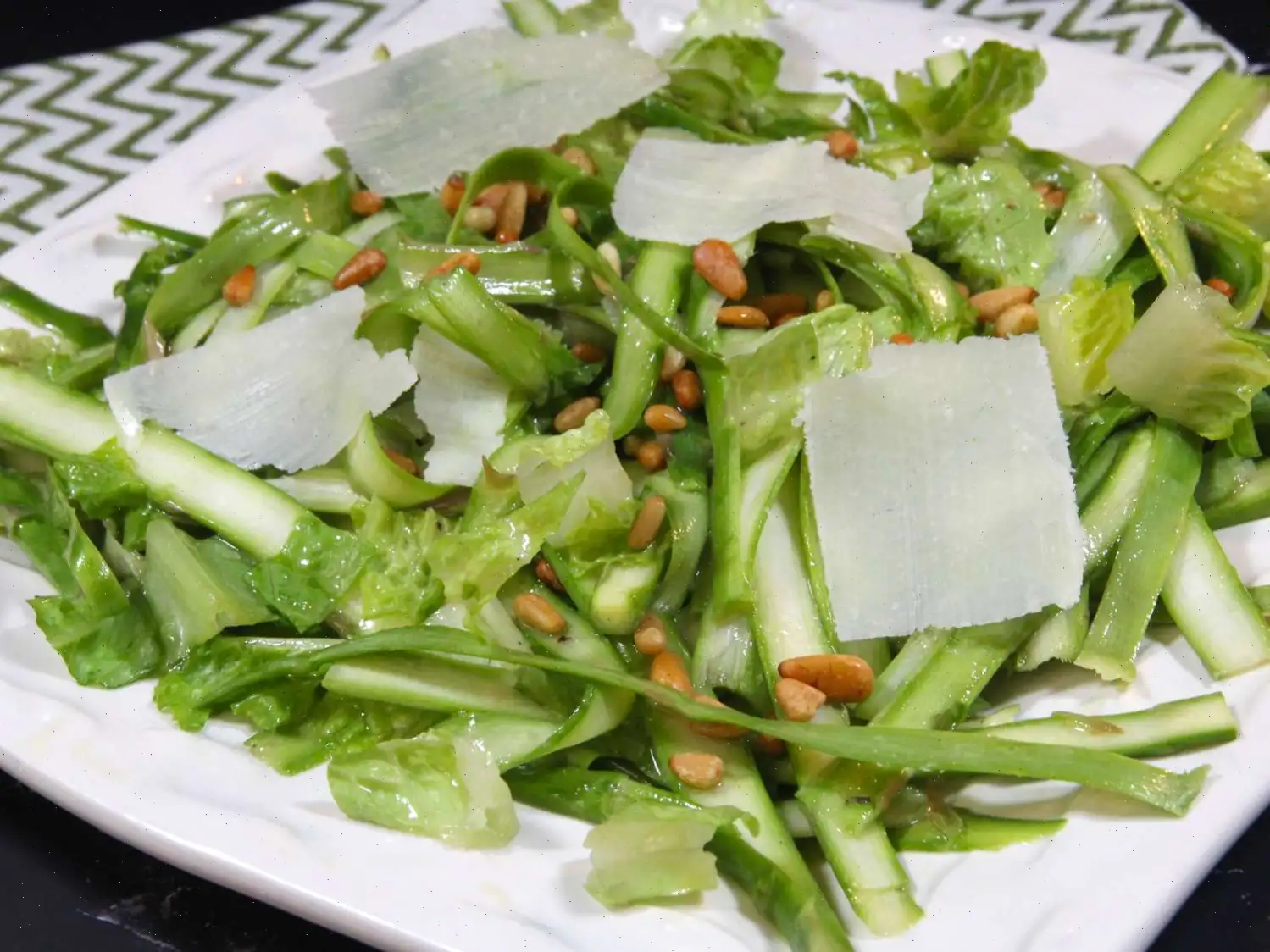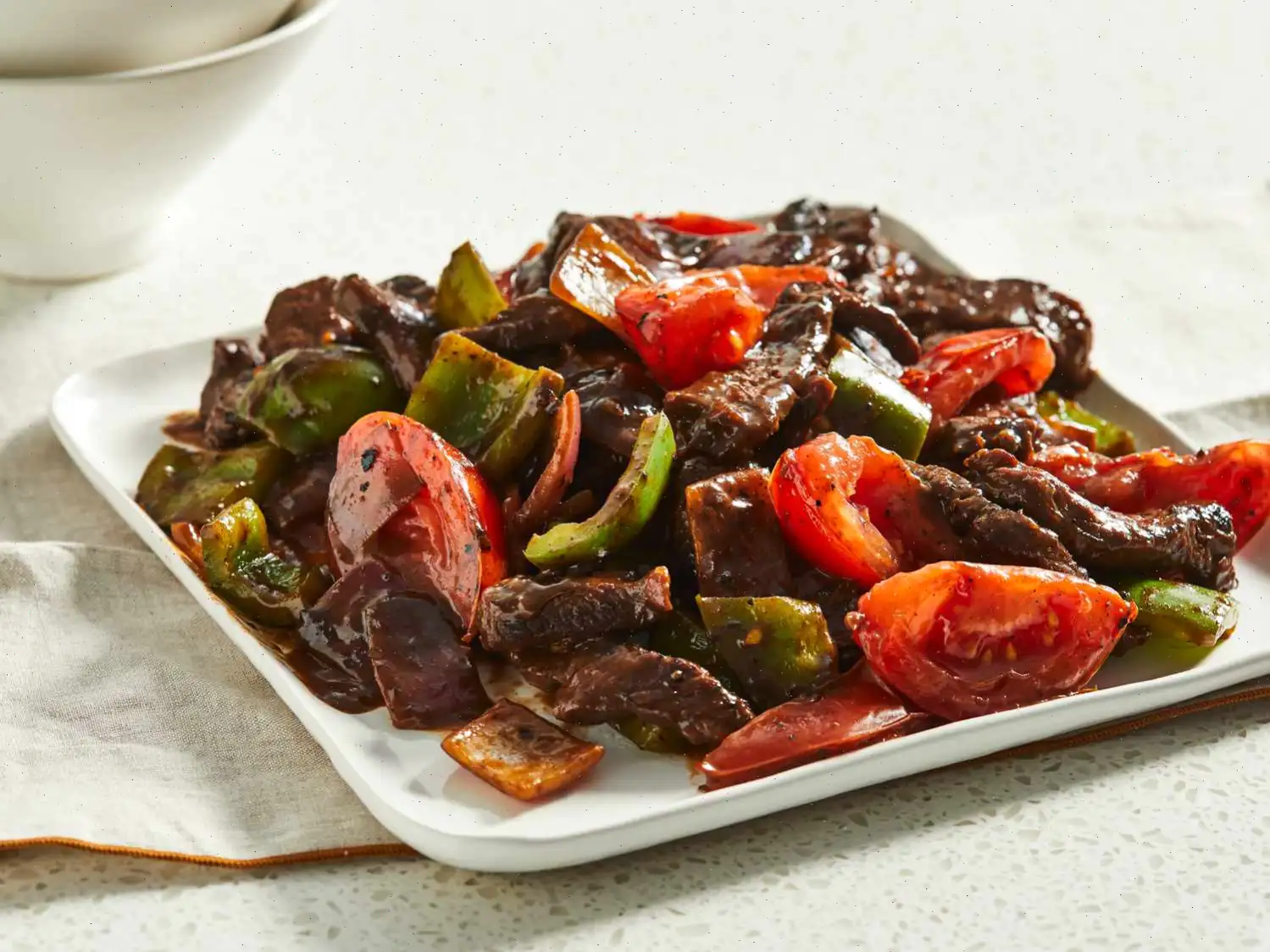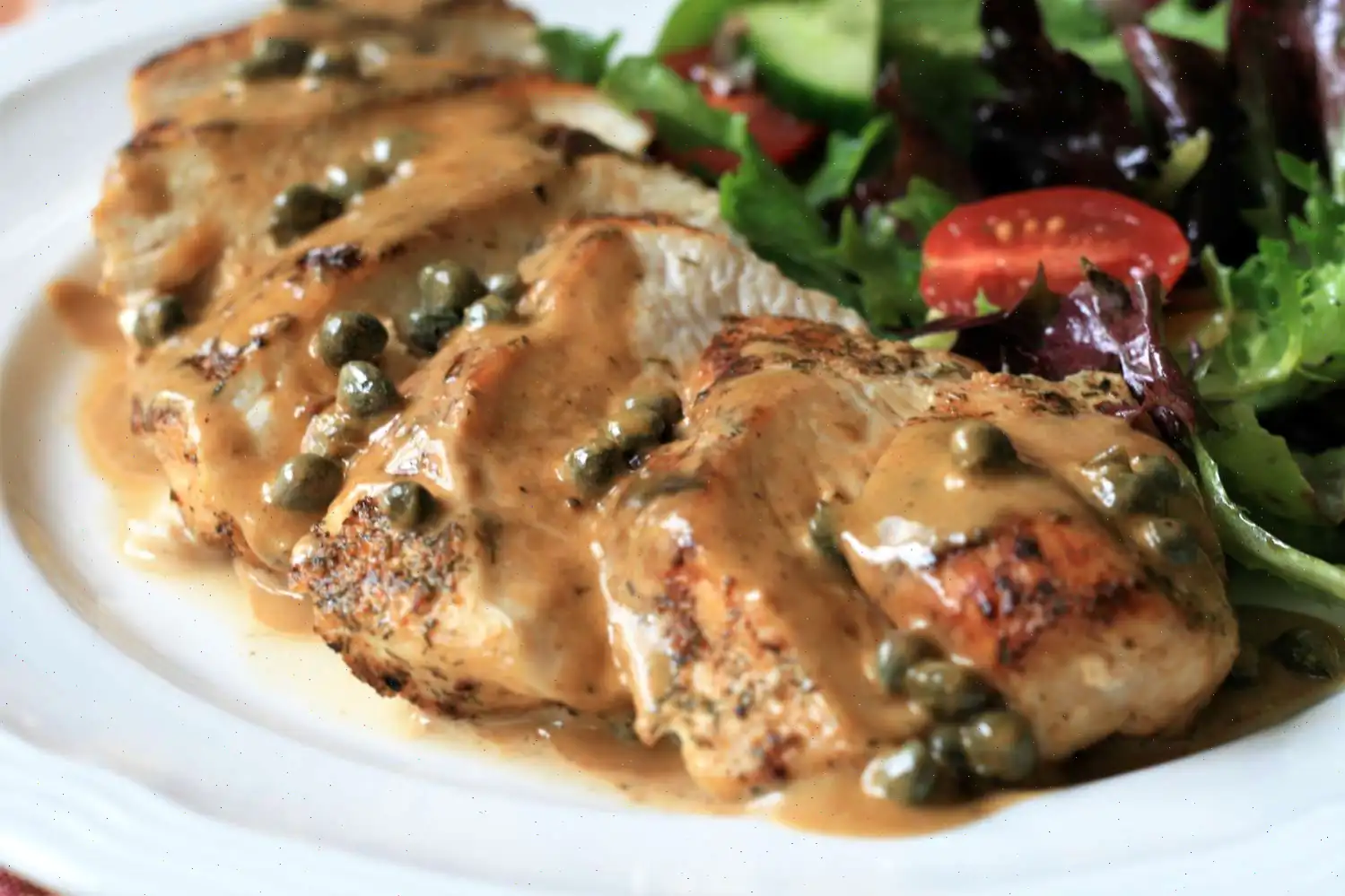
Shaved Asparagus Salad Recipe
Asparagus Salad with Lemon-Dijon Dressing
Yield: 4 servings
Ingredients
Dressing
- 2 tablespoons freshly-squeezed lemon juice
- 1 clove garlic, minced
- 1 teaspoon Dijon mustard
- 1 teaspoon anchovy paste
- 1/4 cup good-quality olive oil
- Salt and freshly ground black pepper to taste
Salad
- 1 pound thicker spear asparagus, woody ends trimmed
- 2 cups roughly-chopped Romaine lettuce
- 1/4 cup shaved Parmesan cheese (or Pecorino Romano)
- 2 tablespoons toasted pine nuts
Directions
Step 1: In a small bowl, combine lemon juice, minced garlic, Dijon mustard, and anchovy paste. Gradually stream in the olive oil while whisking continuously until the dressing is well incorporated and emulsified. Season with salt and freshly ground black pepper to taste. Set aside.
Step 2: Lay the asparagus flat on a cutting board. Using a sharp vegetable peeler, shave the spears lengthwise into paper-thin ribbons, starting from one end and working your way to the other.
Step 3: In a large bowl, combine the asparagus ribbons with the chopped Romaine lettuce.
Step 4: Right before serving, drizzle the prepared dressing over the salad and gently toss to coat the ingredients evenly.
Step 5: Top the salad with shaved Parmesan cheese and sprinkle with the toasted pine nuts for added crunch. Serve immediately.
Nutrition Facts (per serving)
| Calories | 209 |
| Total Fat | 19g (24% Daily Value) |
| Saturated Fat | 3g (16% Daily Value) |
| Cholesterol | 6mg (2% Daily Value) |
| Sodium | 317mg (14% Daily Value) |
| Total Carbohydrate | 8g (3% Daily Value) |
| Dietary Fiber | 3g (11% Daily Value) |
| Total Sugars | 2g |
| Protein | 6g (11% Daily Value) |
| Vitamin C | 11mg (12% Daily Value) |
| Calcium | 92mg (7% Daily Value) |
| Iron | 2mg (9% Daily Value) |
| Potassium | 366mg (8% Daily Value) |
* Percent Daily Values are based on a 2,000-calorie diet. Your daily values may be higher or lower depending on your calorie needs.

Origin and History
Shaved Asparagus Salad is a modern, refreshing salad that combines simple ingredients with a sophisticated presentation. Asparagus itself has a long history, dating back to ancient civilizations like Egypt and Rome. However, the technique of shaving asparagus into thin ribbons to be served raw is a contemporary twist. This style of preparation allows the vegetable to retain its fresh, crisp texture while offering a delicate bite that is often lost when cooked. The dish emerged as part of a broader trend of "raw" salads, especially in Western culinary circles, where lighter, fresher meals gained popularity in the 21st century. While it may seem like a new concept, the tradition of preparing vegetables in delicate ways to preserve their freshness is centuries old.
Regional Features
Though shaved asparagus salad is often associated with modern American cuisine, asparagus itself is a staple in many regions worldwide, particularly in Europe. In Italy, for example, asparagus is frequently used in pasta dishes, while in France, it is often served with hollandaise sauce. This salad, however, is a more minimalist take, showcasing the freshness of the vegetable without overwhelming it with heavy sauces. In the U.S., the dish is commonly served in upscale restaurants or as a side dish during spring, when asparagus is in peak season. Its particularly popular in California, where fresh produce is a key feature of the cuisine.
Differences from Similar Dishes
Shaved Asparagus Salad stands apart from similar dishes such as traditional Caesar salads or simple vegetable salads due to its use of raw asparagus. Most salads featuring asparagus involve cooked spears, which are grilled, roasted, or steamed. However, in this dish, the asparagus is shaved into thin ribbons, offering a lighter, fresher texture and a more delicate flavor. Additionally, the tangy homemade dressing, often featuring lemon and Dijon mustard, complements the asparagus without overpowering it, distinguishing this salad from heavier, creamier dressings typically seen in similar dishes.
Where Its Typically Served
This shaved asparagus salad is often served in restaurants that focus on fresh, seasonal ingredients, particularly in the spring. It's common in bistros, upscale eateries, or farm-to-table restaurants where local produce is celebrated. The salad is also a popular choice for light lunches or as an appetizer to start a meal. Given its fresh, vibrant flavors, its ideal for outdoor gatherings, picnics, or brunches, where its lightness can be appreciated alongside other fresh dishes. Its simplicity and elegance make it a popular choice for fine dining or special occasions.
Interesting Facts
- Asparagus is one of the oldest cultivated vegetables, with records showing its use in ancient Egypt and Greece.
- The nutritional benefits of asparagus are impressive; it's high in fiber, vitamins A, C, E, and K, and a good source of folate.
- The practice of shaving vegetables raw for salads became popular in the 20th century, as chefs and home cooks alike sought ways to highlight the natural flavors and textures of fresh produce.
- While asparagus is typically green, there are also white and purple varieties. White asparagus is grown underground to prevent it from photosynthesizing, giving it its unique pale color.








